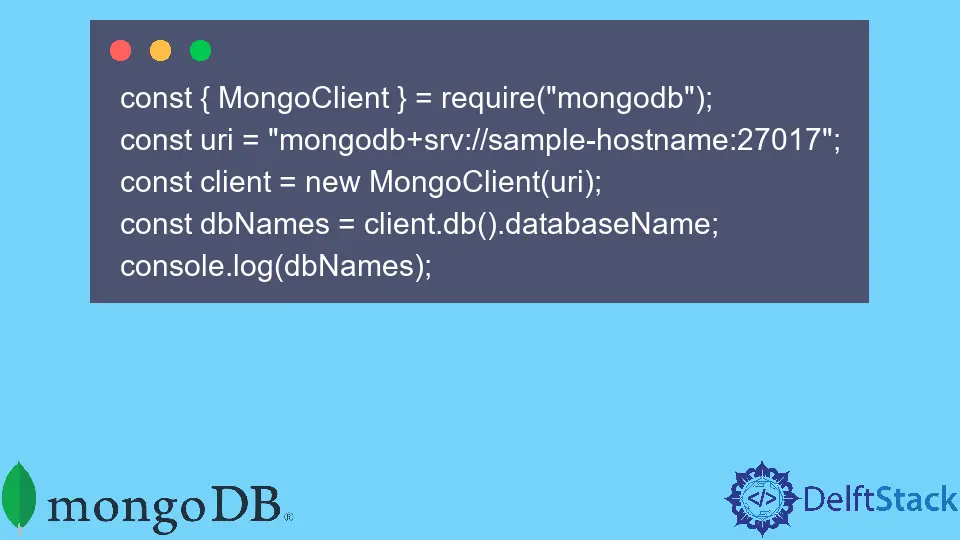How to Get Database From Connection String in MongoDB
- Understanding MongoDB Connection Strings
- Extracting Database Name from Connection String Using Python
- Using Regular Expressions to Extract Database Name
- Conclusion
- FAQ

In the world of databases, MongoDB stands out for its flexibility and scalability. One of the fundamental aspects of working with MongoDB is understanding how to connect to it using a connection string. This string not only facilitates the connection but also contains valuable information about the database you’re accessing.
In this article, we will delve into how to extract the database name from a MongoDB connection string. Whether you’re a developer looking to streamline your database interactions or a database administrator managing multiple connections, this guide will provide you with the insights you need. Let’s get started!
Understanding MongoDB Connection Strings
Before diving into how to extract the database name, it’s essential to grasp what a MongoDB connection string is. Typically, a connection string is a URI (Uniform Resource Identifier) that contains all the necessary information for your application to connect to a MongoDB instance. This includes the database host, port, and authentication details. A standard connection string looks something like this:
mongodb://username:password@host:port/database
In this string, “database” is the specific database you want to connect to. Understanding the structure of this string is crucial for extracting the database name effectively.
Extracting Database Name from Connection String Using Python
To extract the database name from a MongoDB connection string using Python, you can utilize the built-in libraries to parse the string. Below is a simple code snippet that demonstrates how to achieve this.
from urllib.parse import urlparse
connection_string = "mongodb://username:password@host:port/database"
parsed_uri = urlparse(connection_string)
database_name = parsed_uri.path.lstrip('/')
print(database_name)
Output:
database
In this code, we first import the urlparse function from the urllib.parse module, which helps parse the connection string. We then define our connection string and parse it using urlparse. The path attribute of the parsed URI contains the database name prefixed by a slash, so we use lstrip('/') to remove it. Finally, we print the database name.
This method is straightforward and efficient for extracting the database name from a MongoDB connection string. It leverages Python’s built-in capabilities, making it a reliable choice for developers.
Using Regular Expressions to Extract Database Name
Another effective way to extract the database name from a MongoDB connection string is by using regular expressions. This method allows for more flexibility and can handle variations in connection string formats. Below is an example of how to do this in Python.
import re
connection_string = "mongodb://username:password@host:port/database"
match = re.search(r'\/([^\/]+)$', connection_string)
if match:
database_name = match.group(1)
print(database_name)
Output:
database
In this code, we import the re module, which is Python’s library for handling regular expressions. We define the connection string and use the re.search() function to find the database name. The regular expression r'\/([^\/]+)$' looks for a slash followed by any characters that are not a slash until the end of the string. If a match is found, we extract the database name using match.group(1) and print it.
This method is particularly useful if you’re dealing with various connection string formats, as it can be easily adjusted to accommodate different patterns. Regular expressions provide a powerful tool for string manipulation, making this approach versatile.
Conclusion
Extracting the database name from a MongoDB connection string is a fundamental skill for developers and database administrators alike. Whether you choose to use Python’s built-in string parsing methods or leverage regular expressions, both approaches are effective and efficient. Understanding these techniques can help streamline your database connections and improve your overall workflow. As you continue to work with MongoDB, mastering these skills will enhance your ability to manage databases effectively.
FAQ
-
What is a MongoDB connection string?
A MongoDB connection string is a URI that contains all the necessary information to connect to a MongoDB instance, including the database host, port, and authentication details. -
Can I extract the database name without using Python?
Yes, you can manually extract the database name from the connection string by identifying the part of the string that follows the last slash. -
What is the purpose of the database name in the connection string?
The database name specifies which database the application should connect to within the MongoDB instance. -
Are there any tools to help manage MongoDB connection strings?
Yes, there are various database management tools and libraries that can help manage MongoDB connection strings and facilitate easier database interactions.
- Is it safe to include credentials in the connection string?
Including credentials in a connection string can pose security risks. It’s recommended to use environment variables or secure vaults to manage sensitive information.
Shraddha is a JavaScript nerd that utilises it for everything from experimenting to assisting individuals and businesses with day-to-day operations and business growth. She is a writer, chef, and computer programmer. As a senior MEAN/MERN stack developer and project manager with more than 4 years of experience in this sector, she now handles multiple projects. She has been producing technical writing for at least a year and a half. She enjoys coming up with fresh, innovative ideas.
LinkedIn